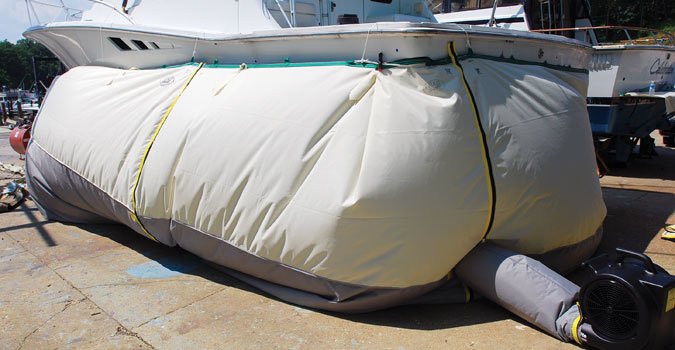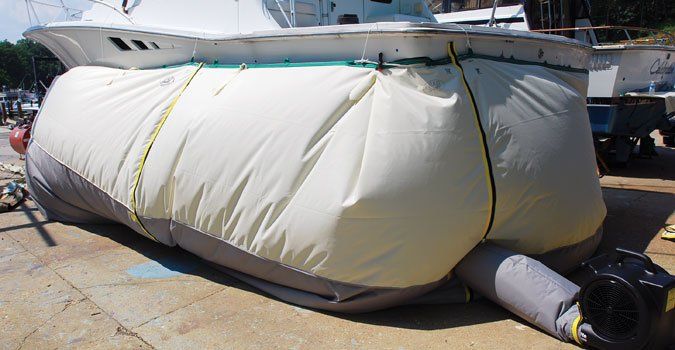Quick. Whats your least favorite boat maintenance project? Cleaning the bilge? Changing the engine oil? … How about stripping off several years worth of bottom paint?
One of the first things my wife, Theresa, and I did with our cruising boat was to strip 10 (20? 30?) years of bottom paint off of the old wooden ketch using an 8-inch electric sander. It probably shaved 10 (20? 30?) years off of my life. I wince just thinking about that summer.
A couple of seasons ago, PSTechnical Editor Ralph Naranjo and contributor Frank Lanier took a different approach: chemical strippers. These reduced the amount of sanding involved, sparing some backbreaking work, but that was about it.
After that experience, Ralph decided to look into sodablasting, featured in the October 2011 issue of Practical Sailor. One of the chief complaints you hear about any for-hire boat work is the exorbitant price charged, but once you start to do the math-and start thinking about your health-a $1,500 fore-hire sodablasting job doesn’t seem so indulgent.

One of the biggest mistakes an owner makes when estimating how much time it takes to strip a hull is to peck away at one of the easy spots where the paint is peeling and then assume the rest of the coating will come off just as easily. Ralph gives a more realistic formula for estimating the amount of time a stripping project will take. First, you estimate the wetted surface area (WSA) using the formula: waterline length (Lwl) x (beam waterline (Bwl) + draft (T)). Multiply this number by .75 for a medium-displacement boat or by .5 for a light-displacement boat. This gives you a very crude estimate of surface area, but its fine for estimating paint removal (or painting).
Now that youve got your total area, you can figure out the amount of actual time it will take you to do the job. Start your stopwatch and attack one square-foot of an easy section. Do the same to a patch where the paint is well adhered. Now estimate how much of your hull will be easy to strip and how much will be hard. No cheating! It will only bite you in the end. Once youve estimated the percentage of hard and easy sections, you can apply your timed results to the total area of the hull.
Heres an example: Your boat has a 30-foot waterline, a 6-foot draft, a waterline beam of 10 feet, and is a medium-displacement vessel. Our fuzzy math for a medium-displacement sailboat
WSA = Lwl x (Bwl + T)
says youve got 360 square feet of paint to strip: 30 x (10 + 6) (.75) = 360.
Next comes the all-important apportionment of easy versus difficult paint removal. In this case, 85 percent of the hull is tough stuff, taking four minutes per square foot to strip: 0.85 x 360 x 4 = 1,224 minutes of backbreaking work. Add in the 15 percent of easy scraping area that takes only 30 seconds per square foot to strip: 0.15 x 360 x 0.5 = 27 minutes. The result is 1,251 minutes, or just under 21 hours of serious scraping. Thats 21 hours of serious work, not including coffee breaks, admiring sisterships hauled out in the same yard, or gazing numbly at the water wishing you were sailing.
Now, how much is your time worth? And don’t forget the money youll be spending on scrapers, chemical strippers (if you use them), sand paper, etc. As much as I like to do my own boat work, this is one for-hire job that is worth considering.




































